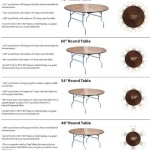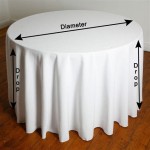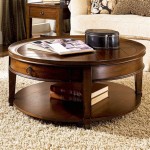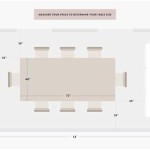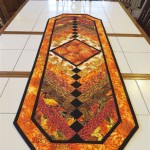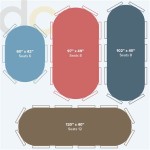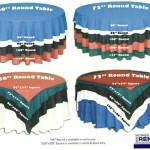DIY Backdrop: Transforming Celebrations with Plastic Tablecloths and Napkins
Creating a memorable backdrop for events, be it a birthday party, wedding, or photo booth session, doesn't require extensive budgets or professional design expertise. A cost-effective and versatile solution involves the use of plastic tablecloths and napkins. These readily available materials can be manipulated and arranged to produce visually appealing backdrops, adding a personalized touch to any celebration. The ease of handling, variety of colors and textures, and affordability make plastic tablecloths and napkins an ideal medium for DIY backdrop projects.
Plastic tablecloths and napkins offer inherent advantages. Their lightweight nature makes them easy to suspend and manipulate. Unlike heavier fabrics or materials, they don't require elaborate support structures. The availability of these materials in a wide spectrum of colors and patterns allows for customization to match specific event themes or color schemes. Furthermore, their water-resistant properties make them suitable for both indoor and outdoor use. The cost-effectiveness is a significant factor, particularly when dealing with large-scale events where budgetary constraints are a concern.
Planning and Material Selection
The initial stage involves planning the design and selecting the appropriate materials. Consider the overall aesthetic of the event and determine the desired style of the backdrop. Options range from simple, single-color designs to more elaborate patterns and textures. Once the design is finalized, calculate the necessary quantities of plastic tablecloths and napkins based on the desired dimensions of the backdrop. It is always prudent to purchase slightly more than estimated to account for errors or design modifications during the construction process. Select the desired colors and patterns, ensuring they complement the event's theme. Furthermore, gather the necessary tools, which typically include scissors, tape (masking tape or double-sided tape), a measuring tape, and a support structure (such as a backdrop stand, wall, or curtain rod).
The choice of plastic tablecloths varies in thickness and texture. Thicker tablecloths offer greater durability and opacity, while thinner ones are more pliable and suitable for creating intricate designs. Similarly, napkins come in various sizes and ply. Larger napkins are generally preferred for creating fuller textures, while smaller napkins can be used for detailed accents. Experimenting with different combinations of tablecloths and napkins can yield unique and visually interesting results. Prioritize selecting materials that are easy to work with and contribute to the desired aesthetic.
Construction Techniques
Several construction techniques can be employed to create visually appealing backdrops using plastic tablecloths and napkins. One common method involves creating fringe or streamers by cutting the tablecloths into strips. These strips can then be layered and attached to a support structure to create a textured backdrop. Cutting techniques include straight cuts, angled cuts, or even scalloped edges to add visual interest. Securing the strips can be achieved with tape, staples, or even by tying them onto the support structure.
Another technique involves crumpling or folding the napkins to create a textured effect. These crumpled napkins can then be arranged and attached to the tablecloths or directly onto the support structure. Varying the size and tightness of the crumples can create a dynamic and visually rich backdrop. This technique is particularly effective for creating abstract or organic designs.
Creating rosettes or flowers from napkins is another popular technique. These rosettes can be made by folding and securing the napkins in a circular shape. They can then be attached to the backdrop individually or in clusters to create a focal point. This technique adds a touch of elegance and sophistication to the backdrop.
Layering techniques can significantly enhance the depth and visual appeal of the backdrop. Overlapping different colors and textures of tablecloths and napkins creates dimension and interest. Experimenting with different layering arrangements can lead to surprising and aesthetically pleasing outcomes. Consider using contrasting colors or textures to create focal points and visual highlights.
Installation and Refinement
Once the individual elements of the backdrop are constructed, the next step involves installation on the chosen support structure. Securely attach the backdrop to the support using tape, staples, or other appropriate fasteners. Ensure that the backdrop is evenly distributed and that there are no noticeable gaps or sagging areas. Regularly step back and assess the overall appearance of the backdrop, making adjustments as necessary.
Lighting plays a crucial role in showcasing the backdrop's features and enhancing its overall impact. Experiment with different lighting arrangements to highlight the textures and colors of the backdrop. Uplighting, spotlights, or string lights can be used to create different moods and effects. Consider the ambient lighting of the event space and adjust the lighting accordingly. The use of colored gels on the lights can further enhance the color scheme of the backdrop.
Additional embellishments can be added to the backdrop to further personalize and enhance its visual appeal. Ribbons, balloons, glitter, or other decorative elements can be incorporated to complement the overall design. Ensure that these embellishments are securely attached and do not detract from the overall aesthetic. Less is often more when it comes to embellishments; avoid overcrowding the backdrop with too many decorative elements.
Creative Applications and Considerations
Plastic tablecloth and napkin backdrops can be adapted for a wide range of events and themes. For birthday parties, consider using bright, vibrant colors and playful patterns. For weddings, opt for more elegant and sophisticated designs using softer colors and delicate textures. Photo booths can benefit from backdrops that are visually interesting and provide a fun and engaging background for photos.
The durability of the backdrop should be considered, especially for outdoor events. Securely fasten all elements of the backdrop to prevent them from being blown away by the wind. Consider using heavier tablecloths and napkins for added stability. Additionally, protect the backdrop from direct sunlight or rain to prevent fading or damage.
Safety is a paramount consideration throughout the design and installation process. Ensure that all materials are non-toxic and fire-resistant. Avoid using sharp objects or tools that could pose a safety hazard. Securely attach the backdrop to prevent it from falling and causing injury. Regularly inspect the backdrop for any signs of damage or wear and tear, and make repairs as necessary.
Customizing the backdrop with personalized elements can make it even more special. Incorporate names, dates, or logos to commemorate the event. Add photos or other mementos to create a truly unique and memorable backdrop. These personalized touches will add a personal connection for the event hosts and guests.
Cost Optimization and Resourcefulness
While plastic tablecloths and napkins are inherently cost-effective, further optimization can be achieved through strategic material sourcing. Consider purchasing in bulk to take advantage of discounted prices. Explore online retailers or discount stores for competitive deals. Utilizing coupons and promotional offers can lead to significant savings.
Repurposing existing materials is a resourceful way to reduce costs and promote sustainability. Old tablecloths or napkins that are no longer suitable for table settings can be repurposed for backdrop construction. This approach reduces waste and provides a creative outlet for utilizing existing resources.
Simplifying the design can significantly reduce the amount of materials required. Opt for simpler patterns and textures that require less cutting and assembly. Consider using a smaller backdrop size to minimize the overall material consumption. Focus on creating a focal point that draws attention to the most important area of the backdrop.

Jessica Grant On Instagram Diy Fringe Backdrop Using 1 Tablecloths Save This Idea For Your Next Celebration Here S How You Ll Need Rectangle Tableclot Plastic Tablecloth Backdrops

Back Drop Using Curtain Rods And Plastic Table Cloths I Taped The To Make A Slo Tablecloth Backdrop Easy Backdrops

Create A Stunning Spring Backdrop With Tablecloths

Dollar Plastic Tablecloths Make For A Great Photo Booth Backdrop Graduation Party Baby Shower

Rainbow Backdrop Using Plastic Table Cloths From Dollar Tree Fruit Birthday Party My Little Pony

Use Plastic Table Cloths Cut Into Strips To Make Bows On The Chairs Super Cute And Affordable Tablecloth Blue Baby Shower Party Settings

Diy Guide Create Unique Fringe Photo Booth Backdrops Using Plastic Covers Jam Paper

Photo Booth Backdrop Using Plastic Tablecloths For A Birthday Party So Easy Rainbow Trolls Pony

Plastic Tablecloth Curtains Backdrop

D I Y Photo Booth Backdrop For 10 Diy
Related Posts

